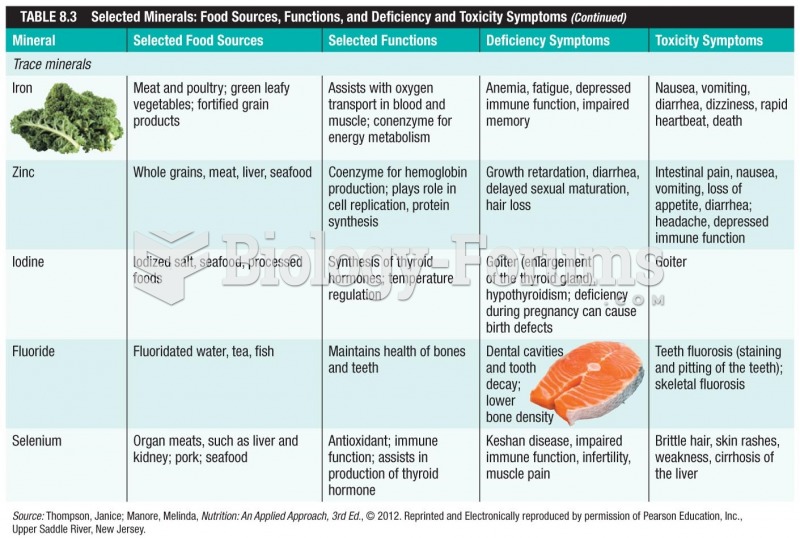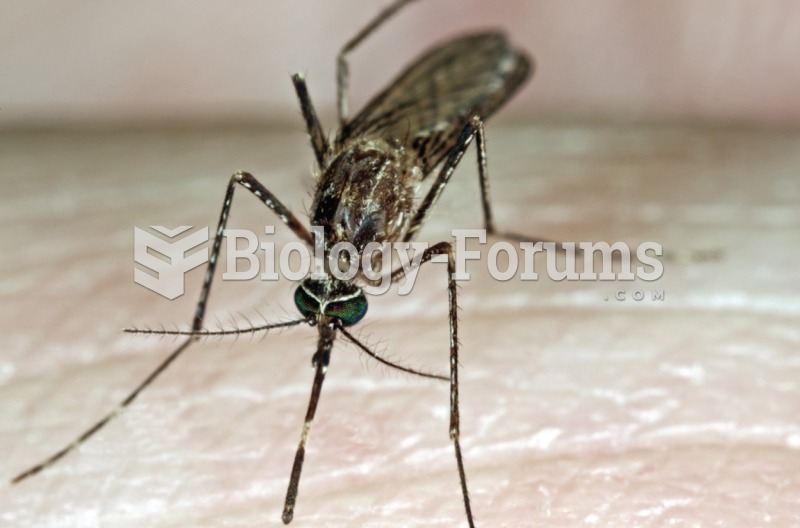Answer to Question 1
D
Iron deficiency anemia is the most common type in pregnancy. Folic acid deficiency is associated with neural tube disorders. Vitamin B12 deficiency is associated with pernicious anemia. Protein deficiencies affect cell maintenance and growth and osmotic pressure in the vasculature.
Answer to Question 2
1; 3
Rationale:
1. Parents might not know why sleep patterns have changed for the early adolescent. Not all parents are aware of what to look for in their child to determine if depression or substance abuse is occurring. Nurses can educate parents on these topics, so that the parents can be proactive instead of reactive.
2. Parents might not know why sleep patterns have changed for the early adolescent. Not all parents are aware of what to look for in their child to determine if depression or substance abuse is occurring. Nurses can educate parents on these topics, so that the parents can be proactive instead of reactive.
3. Parents might not know why sleep patterns have changed for the early adolescent. Not all parents are aware of what to look for in their child to determine if depression or substance abuse is occurring. Nurses can educate parents on these topics, so that the parents can be proactive instead of reactive.
4. The current clothing style usually is apparent based on society norms. This would not be a priority topic to help promote health.
5. Information about driver's education classes is usually presented to the parents in writing if their child is interested. This would not be a priority topic to help promote health.







